13 Work with other Microsoft Office apps
In this chapter
Practice files
For this chapter, use the practice files from the Excel2019SBSCh13 folder. For practice file download instructions, see the introduction.
By itself, Excel 2019 provides a broad range of tools so that you can store, present, and summarize your data. When you use other Microsoft Office 2019 apps, you can extend your capabilities even further. For example, you can include a file created with another Office app in an Excel workbook. If you use Microsoft Word 2019 to write a quick note about why a customer’s shipping expenditures decreased significantly in January, you can include the report in your workbook. Similarly, you can include your Excel workbooks in documents created with other Office apps. If you want to copy only part of a workbook, such as a chart, to another Office document, you can also do that.
Excel integrates well with the web. If you know of a web-based resource that would be useful to someone viewing a document, you can create a hyperlink, which is a connection from one place in a document to a file anywhere on a network or on the Internet, as long as the user’s computer can reach that location. You can also create hyperlinks to another place in the same file.
This chapter guides you through procedures related to including an Office 2019 document in a workbook, storing an Excel workbook as part of another Office document, creating hyperlinks, and pasting an Excel chart into another document.
Include Office documents in workbooks and other files
One benefit of working with Excel 2019 is that because it is part of Office 2019, you can combine data from Excel and other Office apps to create informative documents and presentations. Just as you do when you combine data from more than one Excel workbook when you combine information from another Office file with an Excel workbook, you can either embed the other Office document into the Excel workbook or create a link between the workbook and the other document.
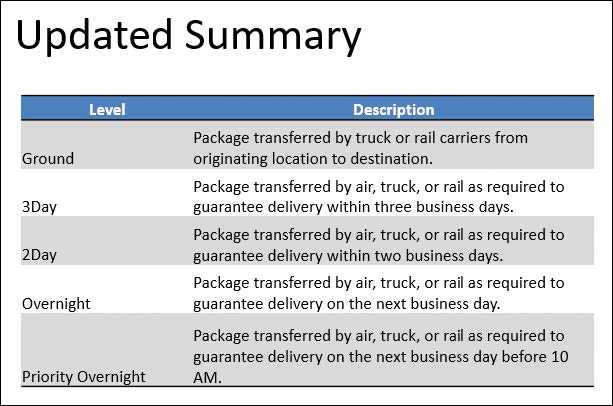
When you link to an Office file from within Excel, any changes made to the Office file will appear in your Excel workbook.
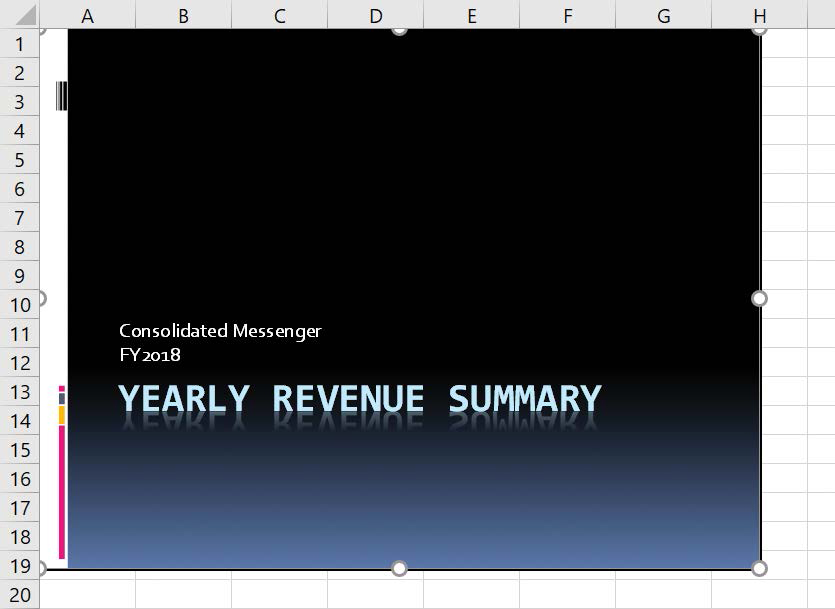
Link Office documents to Excel workbooks
There are two advantages to creating a link between your Excel workbook and another file rather than copying the file into your workbook:
Linking to the other file keeps your Excel workbook small.
Any changes in the file to which you link are reflected in your Excel workbook.
You create a link between an Excel workbook and another Office document by identifying the file, specifying how to connect to it, and choosing how to display the file within your workbook. After you’ve defined this connection, you can edit the file by opening it from within Excel or in the app used to create it.
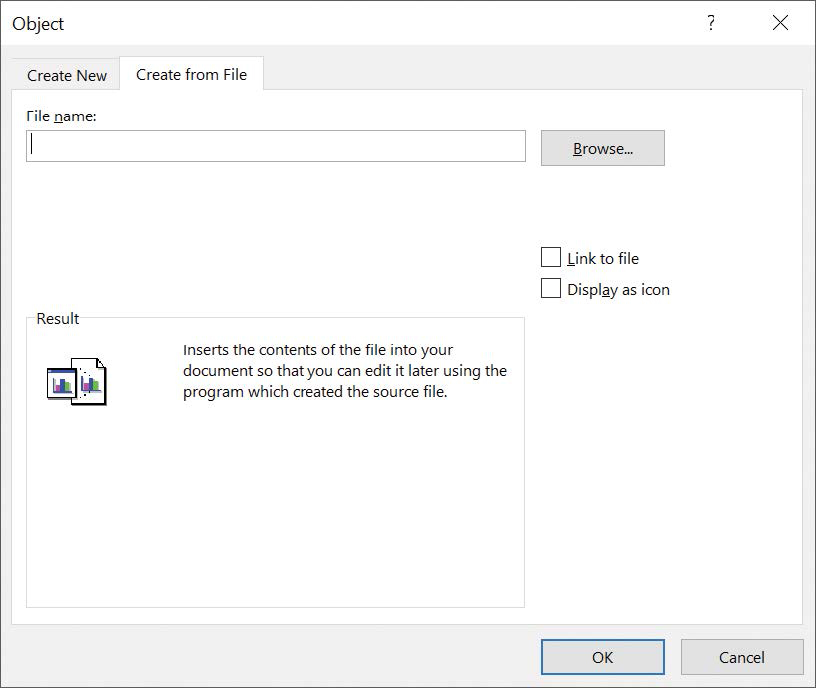
![]() Tip
Tip
The upper-left corner of the linked or embedded file, or the icon that represents the file, appears in the worksheet’s active cell.
To create a link to an Office document
On the Insert tab of the ribbon, in the Text group, click Object to open the Object dialog box.
Click the Create from File tab.
In the Create from File page, Click Browse.
In the Browse dialog box, browse to the directory that contains the file you want to insert, select it in the file list, and then click Insert.
Select the Link to file check box.
Click OK to create a link from your workbook to the presentation.
To edit a file from its link in an Excel workbook
Right-click the linked file in your Excel workbook, point to ObjectType, and click Edit.
Edit the file in the other Office app.
Save and close the file.
Embed files in Excel and other Office apps
The preceding section described how to link to another file from within your Excel workbook. As mentioned, the advantages of linking to a file are that your workbook remains small, and any changes in the linked file will be reflected in your workbook. The disadvantage is that the linked file must be copied with the workbook or be on a network-accessible computer. If Excel can’t find or access the file where the link says it is located, Excel can’t display it. You can still open your workbook, but you won’t be able to view the linked file’s contents.
If file size isn’t an issue and you want to ensure that the information in the file is always available, you can embed the file in your workbook. To do this, you use the Object dialog box. Embedding a file in an Excel workbook means that the entirety of that file is saved as part of your workbook. Wherever your workbook goes, the embedded file goes along with it. Note, however, that the embedded version of the file is no longer connected to the original file, so changes in one aren’t reflected in the other.
![]() Important
Important
To view a linked or embedded file, you must have the app used to create it installed on the computer on which you open the workbook.
If you don’t want your workbook to take up much visual space in the file where you embed it, you can have the other app display the workbook as an icon to save space. As with a linked file, you can always edit your workbook in Excel.
Similarly, you can embed, as well as link, an Excel workbook in a file created using another Office application. This is done from the other application’s Insert Object dialog box. In this dialog box, if the Link check box is cleared, the Excel workbook will be embedded. If that check box is selected, you will create a link to the Excel workbook instead of embedding it.
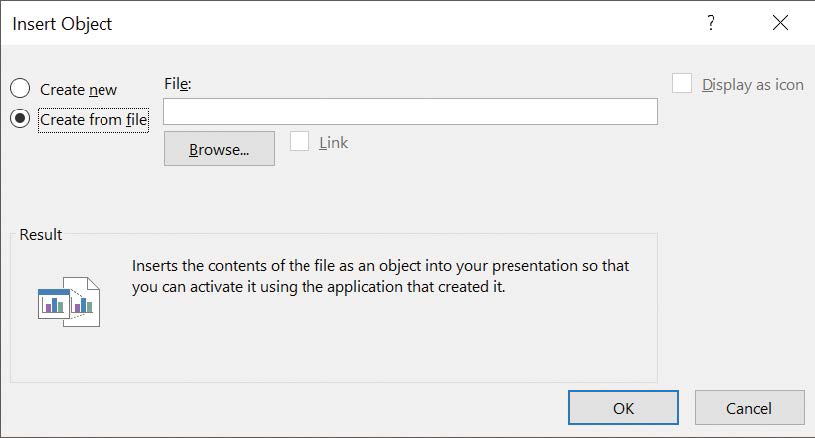
To embed an Office document in an Excel workbook
On the Insert tab, in the Text group, click Object.
In the Object dialog box, click the Create from File tab.
Click Browse.
Navigate to the folder that contains the file you want to embed, click the file, and then click Insert.
Click OK.
To embed an Excel workbook in a file created using a different Office application
In the other Office app, on the Insert tab of the ribbon, click Object.
Click Create from File.
Click Browse.
Navigate to the folder that contains the workbook you want to embed and double-click the file’s name.
Click OK.
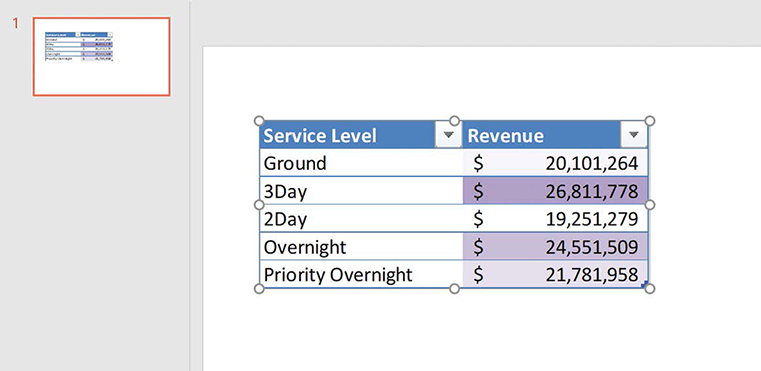
Embed Excel files in other Office documents.
Create hyperlinks
One of the characteristics of the web is that documents published on webpages can have references, or hyperlinks, that you can click to display them. In Excel, you can also create hyperlinks that connect to locations in the same document or to other web documents.
A hyperlink functions much like a link between two cells or between two files, but hyperlinks can reach any computer on the Internet, not just those on a corporate network. Hyperlinks that haven’t been clicked usually appear as underlined blue text, and hyperlinks that have been clicked appear as underlined purple text, but you can change those settings.

You can choose exactly what kind of hyperlink you want to create and specify the text you want to represent it in your workbook.
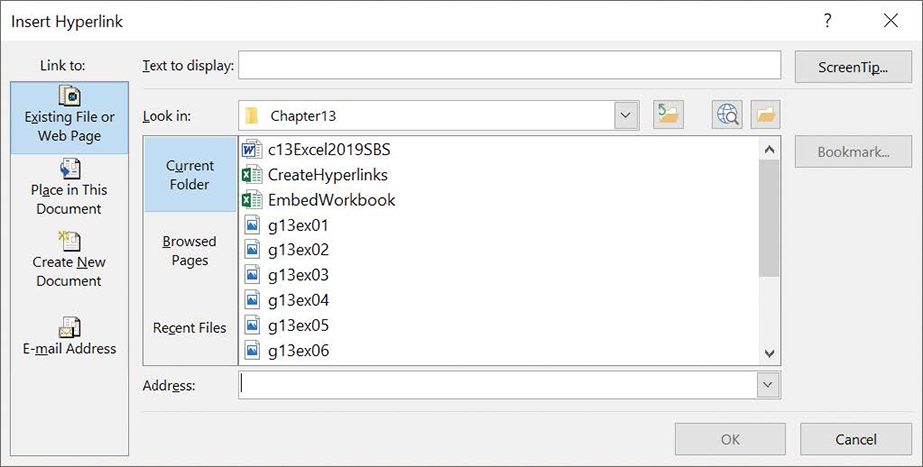
You can choose one of four types of targets, or destinations, for your hyperlink:
An existing file or webpage
A place in the current document
A new document you create on the spot
An email address
Creating a hyperlink that creates an email message when clicked, called a mailto hyperlink, also lets you specify a subject for messages generated by clicking the link. Regardless of the type of hyperlink you create, you can change the text that appears in your worksheet, edit the hyperlink, or remove it at any time.
To create a hyperlink to an existing file
Click the cell where you want the hyperlink to appear.
On the Insert tab of the ribbon, in the Links group, click the Link button.
If necessary, click the Existing File or Web Page category.
Use the controls in the Look in box to locate the file to which you want to create a hyperlink.
Select the file name.
In the Text to display box, enter the text to appear in the cell that contains the hyperlink.
Click OK.
To create a hyperlink to a webpage
Click the cell where you want the hyperlink to appear.
Click the Link button.
If necessary, click the Existing File or Web Page category.
In the Text to display box, enter the text to appear in the cell that contains the hyperlink.
In the Address box, enter the address of the webpage to which you want to link.
Or
Click the Address box’s arrow and select a web address.
Or
Click the Browsed Pages button and click a recently visited page to add its address to the hyperlink definition.
Click OK.
To create a hyperlink to a place in the current file
Click the cell where you want the hyperlink to appear.
Click the Link button.
In the Insert Hyperlink dialog box, click the Place in This Document button.
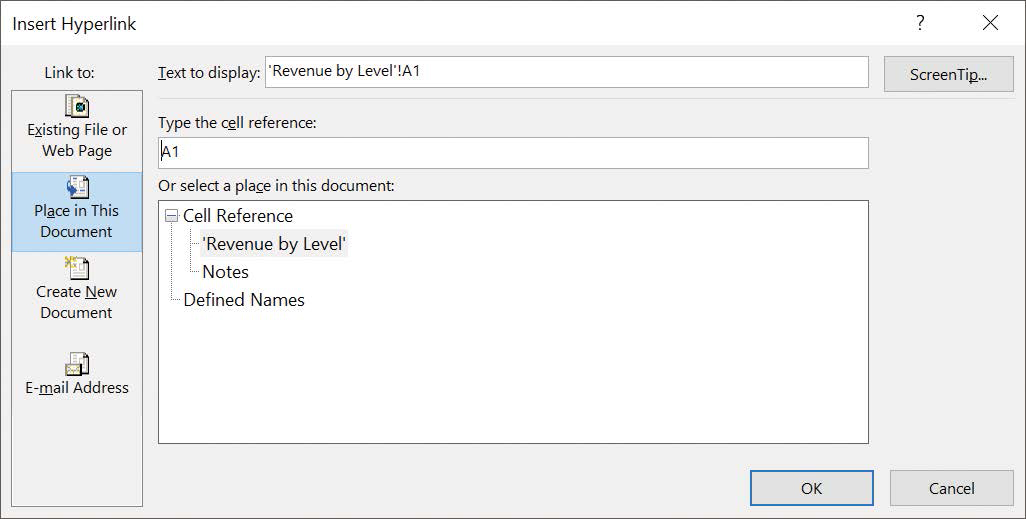
Create hyperlinks that lead to places in the current workbook. Enter the cell reference in the Type the cell reference box.
Or
Click the link target in the Or select a place in this document box.
In the Text to display box, enter the text you want to appear in the cell that contains the hyperlink.
Click OK.
To create a hyperlink to a new file
Click the cell where you want the hyperlink to appear.
Click the Link button.
In the Insert Hyperlink dialog box, click the Create New Document button.
In the Name of new document box, enter a name for the new document.
Click the Change button.
In the Create New Document dialog box, select the folder where you want to create the document.
In the Save as type list, select the type of file you want to create, and click OK.
Select Edit the new document later.
Or
Select Edit the new document now.
In the Text to display box, enter the text you want to appear in the cell that contains the hyperlink.
Click OK.
To create a mailto hyperlink that creates an email message when clicked
Click the cell where you want the hyperlink to appear.
Click the Hyperlink button.
In the Insert Hyperlink dialog box, click the E-mail Address button.
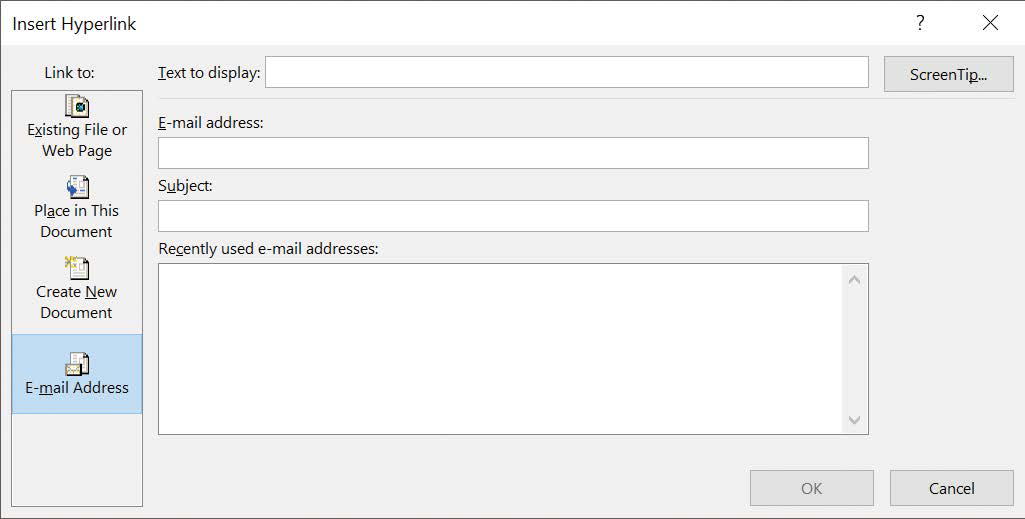
Create a hyperlink that generates a new email message. In the Text to display box, enter the text you want to appear in the cell that contains the hyperlink.
Enter the target email address in the E-mail address box.
Or
Select an email address in the Recently used e-mail addresses box.
Enter a subject for the email message in the Subject box.
Click OK.
To display the target of a hyperlink
Click the hyperlink.
To edit a hyperlink
Right-click the hyperlink and choose Edit Hyperlink from the shortcut menu.
Make the changes you want in the Edit Hyperlink dialog box.
Click OK.
To delete a hyperlink
Right-click the hyperlink and choose Remove Hyperlink from the shortcut menu.
Paste charts into documents
One more way to include objects such as charts from a workbook in another Office document is to copy the object you want to share and then paste it into its new location. You can copy Excel charts directly into Word documents and PowerPoint, in which case the chart updates whenever the data in the source workbook changes. You can also copy an image of the chart. This doesn’t create a link to the original data, but it does provide an accurate picture of the chart’s appearance when you captured the image.
![]() Important
Important
If you create a link to an Excel chart by pasting the chart into another Office file, the Excel workbook must keep the same relationship with the file as when you linked the chart. If the workbook and other Office file are in the same folder, they must remain in the same folder. If the workbook is on a networked computer, it must remain in its original folder so the link path remains the same.
To paste a chart into an Office document, preserving a link to the original workbook
In Excel, right-click the chart and click Copy.
Display the Office file in which you want to paste the chart, and press Ctrl+V.
To paste an image of a chart in an Office document
In Excel, right-click the chart and click Copy.
Display the Office file in which you want to paste the chart, and press Ctrl+V.
Click the Paste Options button in the lower-right corner of the pasted chart.
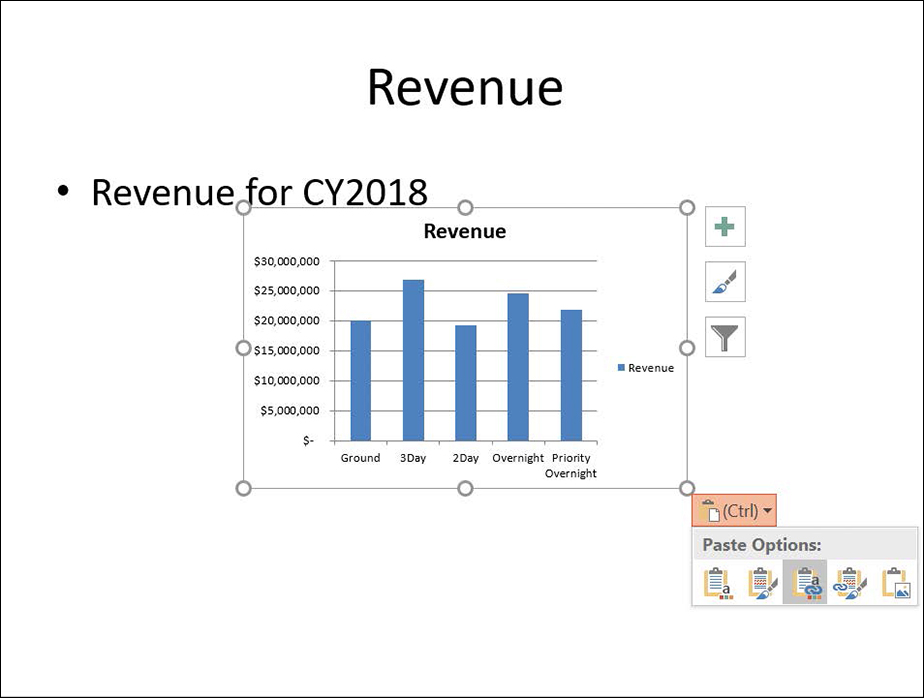
Add links to charts or just copy the chart’s current appearance. Click the Picture button.
Skills review
In this chapter, you learned how to:
Include Office documents in workbooks and other files
Create hyperlinks
Paste charts into documents
Practice tasks

The practice files for these tasks are located in the Excel2019SBSCh13 folder. You can save the results of the tasks in the same folder.
![]() Important
Important
You must have PowerPoint installed on your system to complete some of the following procedures.
Include Office documents in workbooks and other files
Open the LinkFiles workbook in Excel and the LinkWorkbooks presentation in PowerPoint, and then perform the following tasks:
Click cell B3.
Create a link to the LinkWorkbooks PowerPoint presentation.
Display the linked file as an icon in your workbook.
Open the LinkWorkbooks presentation for editing from within Excel, edit the presentation, save your changes, and close the presentation.
Switch to the LinkWorkbooks presentation and display the second slide.
Embed the EmbedWorkbook Excel workbook in the practice files folder in the PowerPoint presentation.
Edit the embedded file from within PowerPoint and save the presentation.
Open the EmbedWorkbook workbook in Excel and compare it with your changed file.
Create hyperlinks
Open the CreateHyperlinks workbook in Excel, and then perform the following tasks:
On the Revenue by Level worksheet, click cell E2.
Create a hyperlink to the LevelDescriptions workbook in the practice files folder.
Click cell B11 and create a hyperlink from the Notes text on the Revenue by Level worksheet to the Notes worksheet.
Click cell C11 and create a mailto hyperlink that sends a message to your email account with the subject Test from Excel.
Edit the Text to display field of the mailto hyperlink to read Information on service levels.
Delete the hyperlink to the Notes worksheet.
Paste charts into documents
Open the LinkCharts workbook in Excel and the ReceiveLinks and LinkWorkbooks presentations in PowerPoint, and then perform the following tasks:
Paste the chart from the LinkCharts workbook into the ReceiveLinks presentation.
Paste an image of the chart from the LinkCharts workbook into the LinkWorkbooks presentation.
